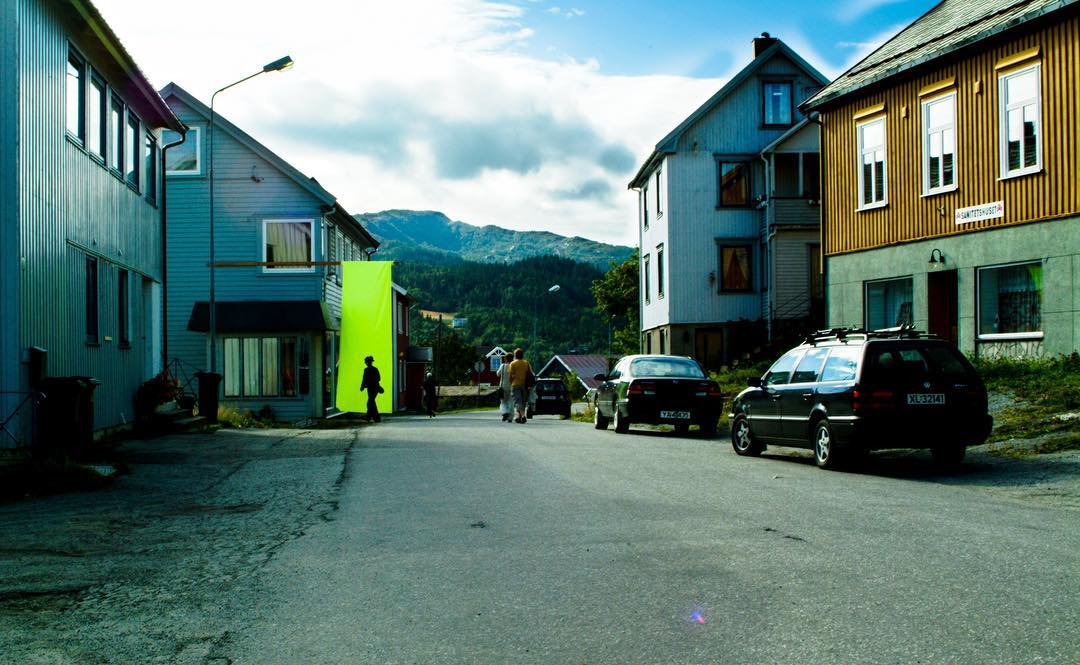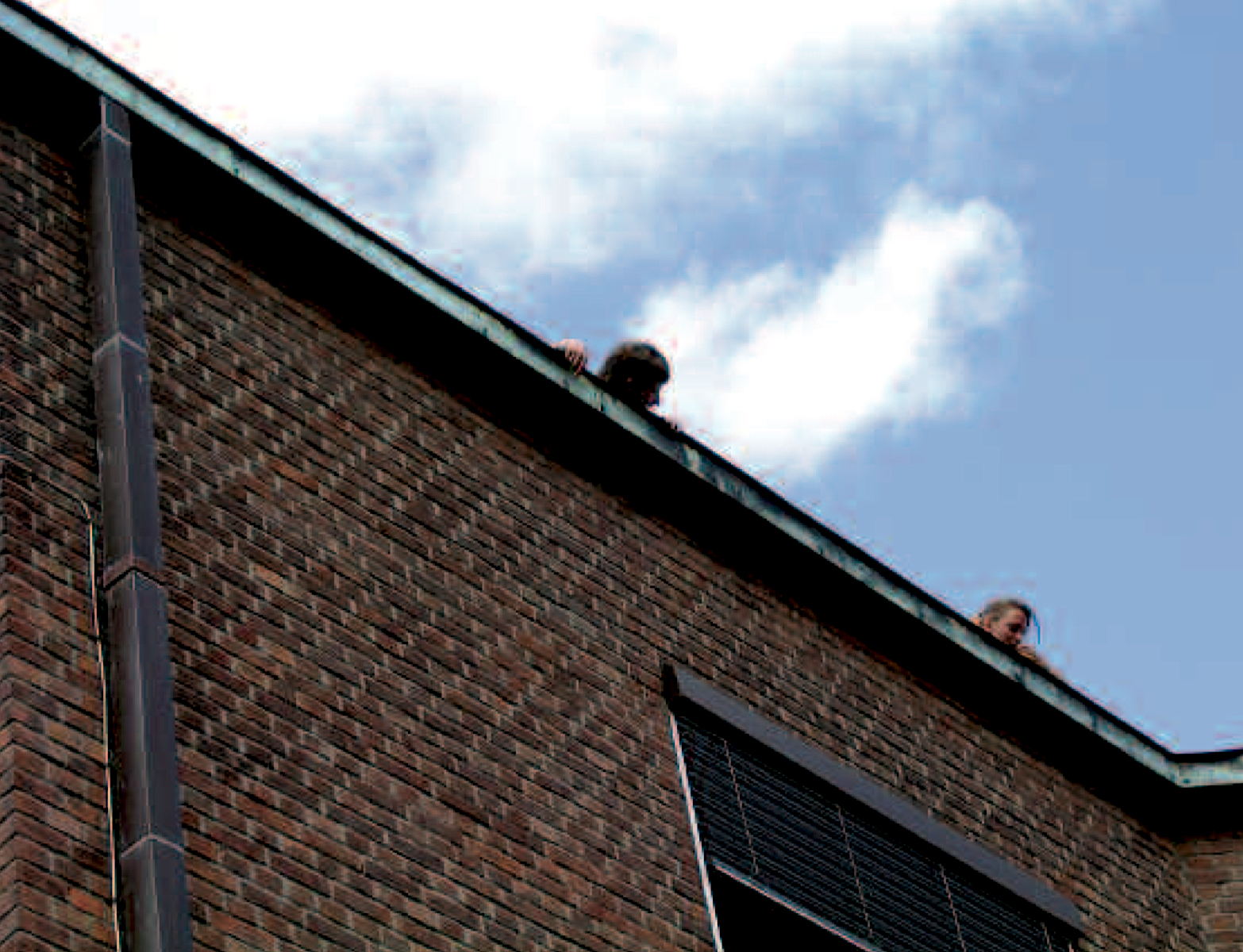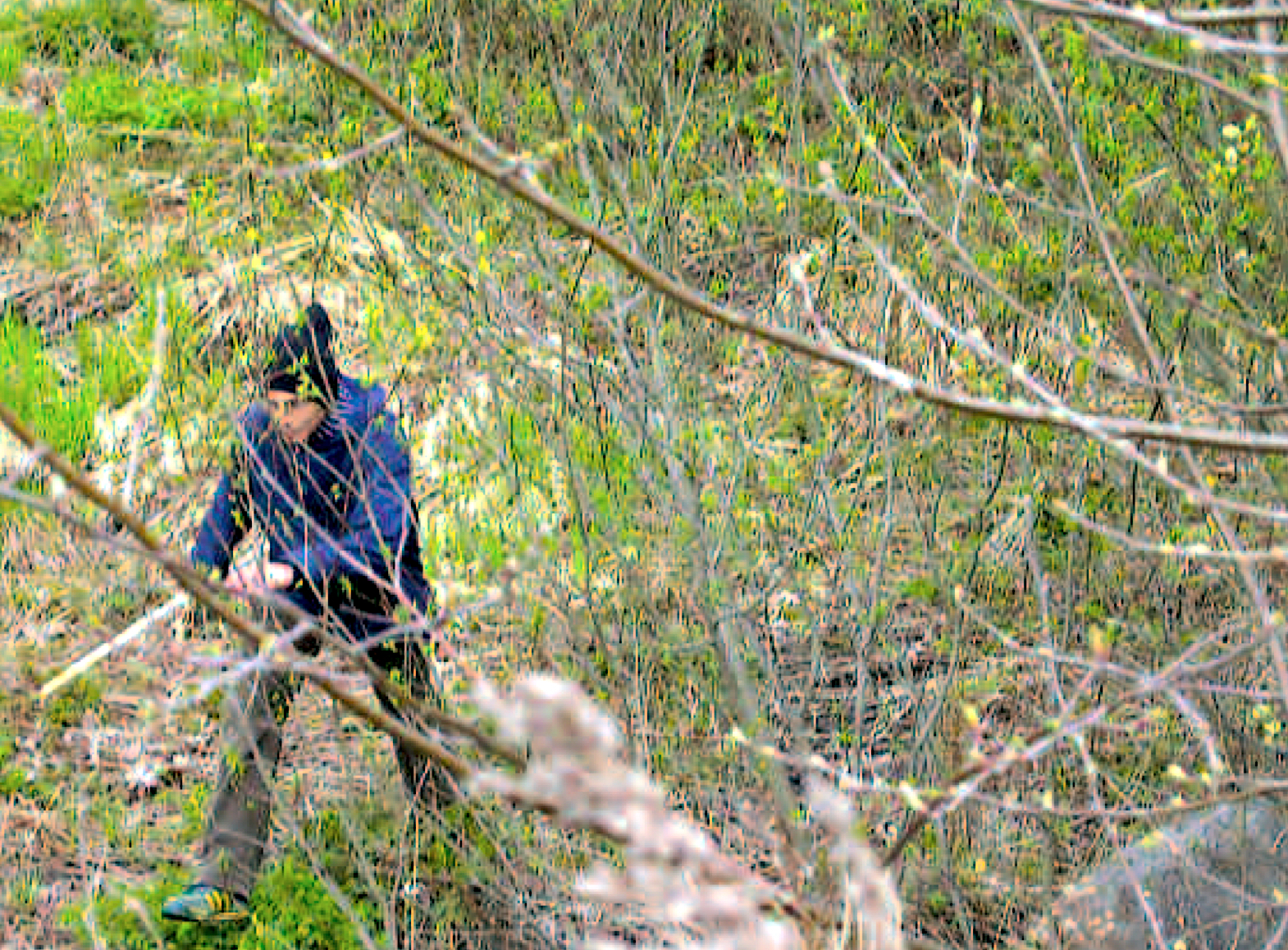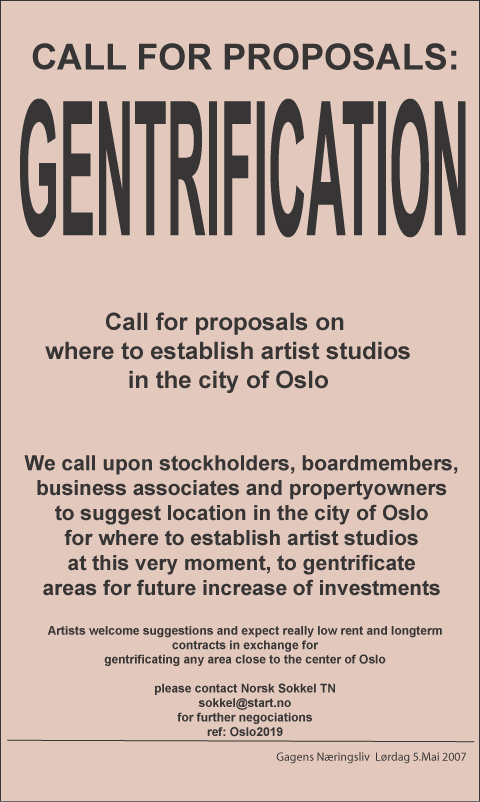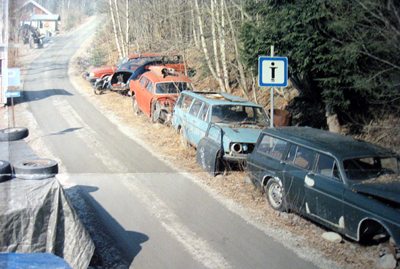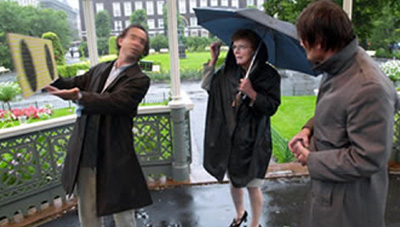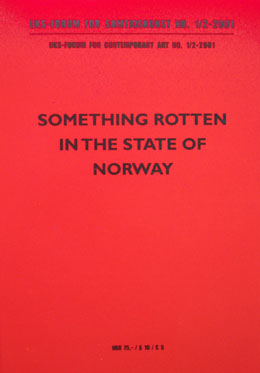my entry to B-post journal focusing on the role of the artist in public space
Artists In Public Space + Strategic Art
norwegian below
KUNSTJOURNALEN B-POST
Strategic Art
Business owners and management at large companies now must see the following!
Anyone responsible for building new public and private commercial buildings should see the enormous potential there will be in including a studio in the building, a working professional artist in the company. A studio of considerable size should be included in the premises, in such a way that the artist in question becomes an integral part of the working environment. The disciplinary quality and the stimulating effect of having a person working in the community, working without a specific cause or any visible intention, at their own expense, will make an increased still measurable contribution to the companys work environment and employees capacity.
To further increase both the company and the artist's potential, the artist can be invited to sit in on all boardmeetings. The artist's benefit is evident; the board remuneation alone would significantly increase hirs wages. But the company will also enjoy an asset in including the artist at the board meetings. Obviously not because of the artist's expertise in the company's field of operations, but on the contrary, hirs incompetence and insensitivity to the economic and professional reality of the business.
The artist's insight and presence will give the company necessary stimulus when the artist dare to propose unrealistic strategies or ask questions to the board on topics that no other board member had thought of. Terje Nicolaisen 2006
Artists in Public Space
It turns out that no artist can work freely in a public assignment, be it for state, municipality or for private institutions. This has never been the goal of art anyway.
However, it is now time to incorporate public decoration into contemporary art. First, the embellishment field has great challenges for artists and there are very large financial benefits associated with public assignements. Secondly, the Foundation of Public Embellishment (KORO sic.), with political support, now shows new interest in loosening the strong guidelines and frameworks that exists concerning decoration of public buildings. They want an expanded understanding of the concept of decoration, to apply to contemporary temporary art projects in public space and in contemporary art in general. The field should to a greater extent, be an arena for artists, according to the authorities.
However, it is not possible for an artist to work in a commision context, without having to deal with complex bureaucratic structures, contructional - technical frameworks and political intentions that underlie the assignment.
Therefore, a new scheme is proposed here, for the Art in Public Space (KORO sic.) - and also other private clients; Artists are engaged in the foundation (at KORO), without relating to the them (KORO) as an employer. This means that KORO does not make instructional demand on the artist, other than paying the wages and make sure that the artist continues her or his artistic work as before. KORO keeps 3 - 6 contemporary artists operating on an average annual salary for 2 - 4 years, without requiring any form of feedback or other documentation. This is a trust relationship; the artist works completely freely as she or he would otherwise have done. KORO for its part, must only rely on the fact that interesting and meaningful projects in public space might arise as a direct or indirect cause of this.
The actual results or effects cannot be discussed as KORO’s projects but must be referred to as the artist's activity, until the employment relationship is over. Then KORO should produce a well-thought-out and profound book about the artist's general work during hirs period as a secret artist. Terje NIcolaisen 2006
Kunstnere i Offentlig Rom
Det viser seg at ingen kunstner kan jobbe fritt i et oppdrag, enten det er for statlige, kommunale eller private institusjoner. Det har i og for seg aldri vært et mål med oppdragskunst heller.
Nå er det imidlertid på tide å innlemme den offentlige utsmykkingen i samtidskunstens arbeidsområde. For det første har utsmykkingsfeltet store utfordringer for kunstnere og det er svært store økonomiske fordeler forbundet med offentlig utsmykking. For det andre viser nå Fondet for Offentlig Utsmykking (KORO sic.) med støtte fra politisk hold, interesse for å løsne opp i de sterke føringer og rammer som ligger til grunn for utsmykking av offentlige bygg. De ønsker seg en utvidet forståelse av utsmykkingsbegrepet, til å gjelde temporære kunstprosjekter i offentlig rom og annen samtidskunst. Dette feltet burde i større grad være en arena for kunstnere.
Det er imidlertid ikke mulig for en kunstner å jobbe i en oppdragssammenheng, uten å forholde seg til komplekse byråkratiske strukturer, byggtekniske rammeverk og politiske intensjoner som er lagt til grunn for oppdraget.
Derfor foreslås det her en ny ordning for utsmykkingsfondet (KORO sic.) - eller også andre private oppdragsgivere - hvor kunstnere blir ansatt i fondet (hos KORO), uten å forholde seg til fondet (KORO) som arbeidsgiver. Med dette menes at fondet (KORO) ikke setter krav til kunstneren, annet enn at de mottar lønn (fra staten) og fortsetter sitt kunstneriske virke som før. Fondet (KORO) holder 3 - 6 samtidkunstnere operative på en gjennomsnittelig årslønn i 2 - 4 år, uten å kreve noen form for tilbakemelding eller annen form for dokumentasjon. Dette er et tillitsforhold, kunstneren arbeider helt fritt slik som hun eller han ellers ville ha gjort. Fondet (KORO) på sin side må bare stole på at det faktisk oppstår interessante og meningsbærende prosjekter i offentlig rom som direkte eller indirekte årsak av dette.
De faktiske resultatene eller virkningene, kan ikke diskuteres som fondets (KOROs) prosjekter men derimot som kunstnerens egen aktivitet, inntil ansettelsesforholdet er over. Da kan fondet (KORO) eventuelt produsere en gjennomarbeidet og dyptpløyende bok om kunstnerens generelle arbeid under sin periode som hemmelig kunstner. Terje Nicolaisen 2006
Strategisk Kunst
Bedriftseiere og ledelse i store bedrifter må nå se følgende. Den som er ansvarlig for bygge nye offentlige og private næringsbygg, burde se det enorme potensiale det vil være i å inkludere en arbeidene profesjonell billedkunstner i selskapet. Et atelier av betydelig størrelse burde inkluderes I kontorlandskapene på en slik måte at vedkommende kunstner ble en integrert del av arbeidsmiljøet. Den korrigerende kvaliteten og stimulerende effekten av å ha en persons som arbeider uten særskilt årsak eller synlig intensjon, på egen bekostning, vil gi et økt dog ikke målbart bidrag til bedriftens arbeidsmiljø og de ansattes arbeidskapasitet.
For ytterligere å øke både bedriften og kunstnerens potensiale, kan kunstneren innlemmes i bedriftens styre. Kunstnerens utbytte er åpenbart i og med at styrehonoraret ville bidra til en betydelig økning i dennes overlevelsesevne. Men også bedriften vil kunne få en ressurs i å inkludere kunstneren på styremøtene. Åpenbart ikke på grunn av kunstnerens kompetanse på bedriftens fagområde, men tvert imot dennes inkompetanse og ufølsomhet ovenfor næringslivets økonomiske realiteter og faglige problemstillinger. Kunstnerens blikk og tilstedeværelse vil først gi selskapet den nødvendige stimulans når hun eller han våger foreslå urealistiske strategier eller stiller spørsmål til styret som ingen fagkompetente styremedlemmer ville ha tenkt på.
KUNSTJOURNALEN B-POST
UKS FORUM FOR SAMTIDSKUNST 1/2 2001
